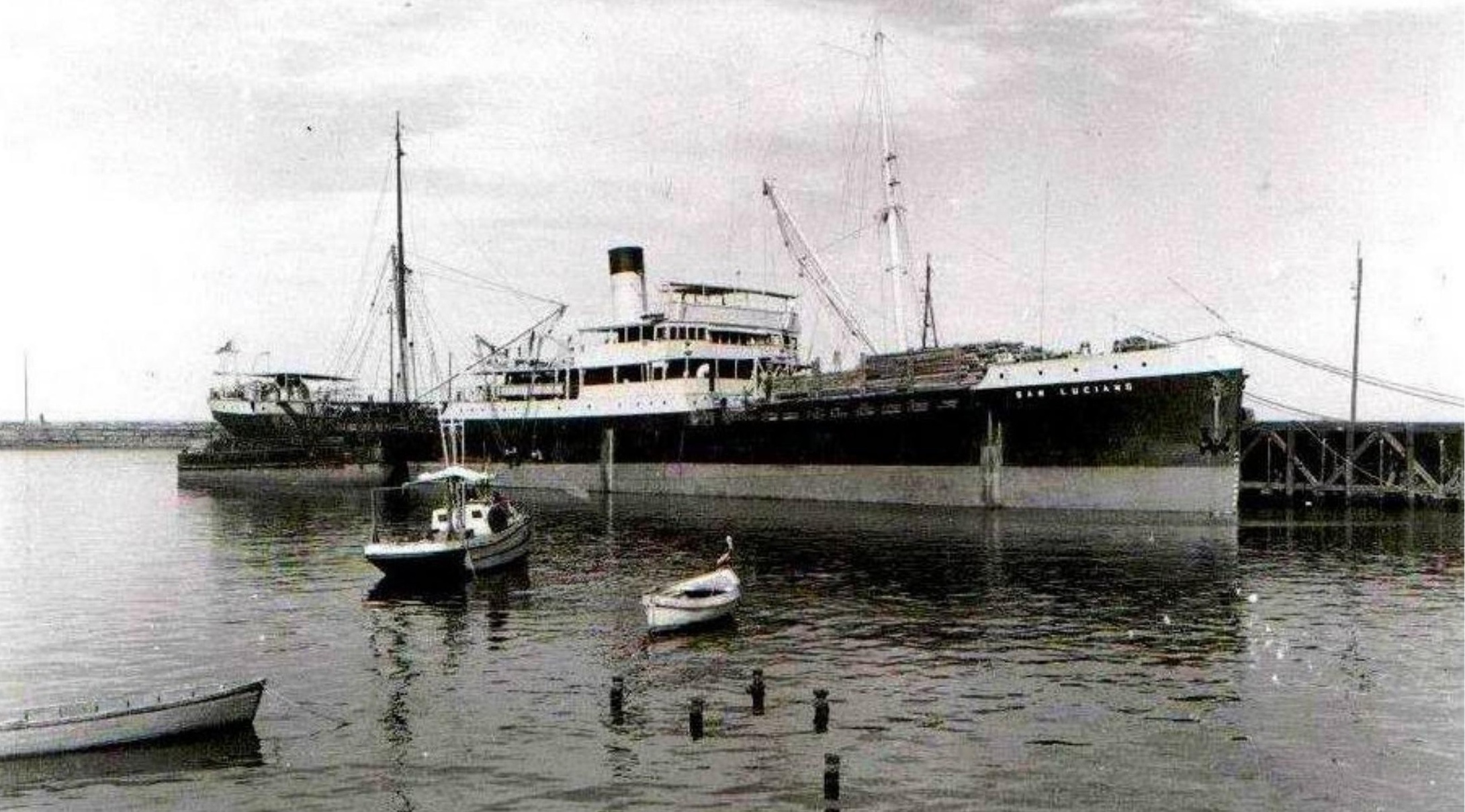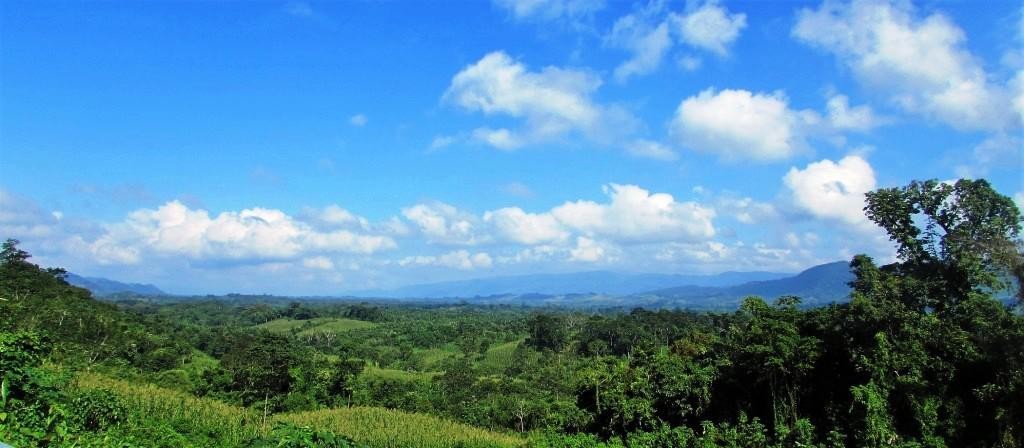By Terry Sovil from the February 2018 Edition
The San Luciano has always puzzled me. I did some basic re-search but didn’t find a lot of information on the “San Luciano”. It was there, I didn’t find it, partly because she started out as the “Argyll”. I also accepted what I was told, that she went down in the 1959 hurricane.

Recently a local group, Vive Manzanillo, released some fascinating new details. About the same time I got an email from a diver who was interested in diving The San Luciano wreck. Nothing else. That got my attention. Turned out it was Peter G. Jensen, a 40 year ship wreck diver and researcher from the Los Angeles area of California. He started with a free dive on a Baja wreck in 1969, the same year I started diving. Peter visited on Saturday, January 6, 2018 and we were able to talk at length and make a 97 minute dive on the San Luciano. Peter can be reached at 310-544-1840 or waterlinepro@cox.net.

He loves wreck questions. Between the Vive Manzanillo re-search and Peter Jensen’s past research on the wreck, I got a lot of new information. Peter’s passions are the wrecks of the Baja and he is writing a book on them. Photo credits to Graham Mackintosh who took a great interest in Baja ships, and Nathan Peach who shot the underwater photos.

The Argyll / San Luciano History:
• Built in 1892 by the William Gray and Co. in West Hartlepool (Sunderland), England
• Rig: Auxiliary Sailing Ship
• 2953 gross tons when loaded, 1880 net (tanker)
• 320.3 x 40.7 x 24.5 feet / 97.536 x 12.4 x 7.5 Meters
• Iron hull
• Motor: 1 triple expansion engine, 3 cylinders, 1 propeller, 1,300 horse power; built by Central Marine Works, UK
• Service: Tanker/freighter
• Home port when lost: Santa Rosalia, Mex.
• Loss: 6 Aug. 1965 — Hit submerged rocks 38 nautical miles off Manzanillo; 19/Aug/1965 stranded in this port to avoid a total loss but was a construction loss. Lloyds of London stated she was sunk in Manzanillo “to be salvaged.” All of her upper structure, fittings and gear were salvaged. Some as late as 1988.

Her Names and Home Port Countries:
• ARGYLL – 1901 – United Kingdom
• ARGYLL – 1903 — USA
• ARGYLL – 1906 – USA
• ARGYLL – 1940 – France
• San Luciano – 1950 – France
• San Luciano – 1955 – Mexico
• San Luciano – 1957 – Mexico
• San Luciano – 1965 – Mexico
• Wrecked on 6/Aug/1965
She was built as a dry cargo steamer fired with coal and then converted to an oil tanker, with a central pilot’s house and a single smokestack. She was purchased in 1900 by the Progreso Steamship Company and soon transferred to the Michigan Steamship Company where she was converted to a tank steamer. She had a capacity of 30,000 barrels of oil. Both of her masts were cut down to act as boom kingposts. Home port was San Francisco. The conversion work was completed in 1903. She was chartered to the Union Oil Company who purchased her in 1905.

In 1920, she was transferred to the Compagnie du Boleo of Paris, France. In 1940, she was registered in Panama but her home port was Santa Rosalia, where her crew lived, and renamed from ‘Argyll” to “San Luciano”. In 1955, she was acquired by Compañía Minera de Santa Rosalia, of Mexico City, and converted to a dry-cargo carrier. At this time, it was found that her tank bulkheads had rusted out. In 1957, she was transferred to Naviera de Baja California, S.A. with the same Mexico City ad-dress. Her two forward tanks were modified for either liquids or dry cargo. She transported manganese ore and some copper ore to smelters in Tacoma, Washington and then returned with bricks, oil and lumber.
On August 6, 1965, she struck a submerged rock at Punta Hermanos, Tenacatita, about 38 miles / 61km from Manzanillo. The collision damaged her front and tore into her forward cargo holds. Flooding went back to the engine room’s bulkhead and held. The Captain, Romero Ortiz, flooded the rear ballast tanks to balance the vessel and continued to sail to Manzanillo. Anchored out on the Juluapan peninsula near Playa La Boquita in Santiago Bay, a diver descended on the wreck and determined

 the damage was too great for repair. She was sold to a scrap salvage operation in Guadalajara. To her credit, she was the oldest deep-water commercial steamship still active on the Pacific Coast, with a 73 year history that spanned two World Wars.
the damage was too great for repair. She was sold to a scrap salvage operation in Guadalajara. To her credit, she was the oldest deep-water commercial steamship still active on the Pacific Coast, with a 73 year history that spanned two World Wars.
She remains a sunken treasure in Manzanillo. A 10-15 minute swim from shore, scuba divers and snorkelers can enjoy the thrill of a ship wreck in shallow water. An average depth of about 14 feet / 5 meters. The ship often sports sea horses, turtles, eels, octopus, pufferfish,  sometimes a spotted eagle ray and magnificent schools of fish.
sometimes a spotted eagle ray and magnificent schools of fish.
You can circumnavigate the wreck and there are some areas where you can penetrate. Visibility on the wreck is often not very good but there are times when it is good and you can see a lot of the ship and start to put things together rather than seeing 5 feet / 1.5 meters at a time. She does have a history!

Download the full edition or view it online
—
Terry is a founding partner and scuba instructor for Aquatic Sports and Adventures (Deportes y Aventuras Acuáticas) in Manzanillo. A PADI (Professional Association of Dive Instructors) Master Instructor in his 36th year as a PADI Professional. He also holds 15 Specialty Instructor Course ratings. Terry held a US Coast Guard 50-Ton Masters (Captain’s) License. In his past corporate life, he worked in computers from 1973 to 2005 from a computer operator to a project manager for companies including GE Capital Fleet Services and Target. From 2005 to 2008, he developed and oversaw delivery of training to Target’s Loss Prevention (Asset Protection) employees on the West Coast, USA. He led a network of 80+ instructors, evaluated training, performed needs assessments and gathered feedback on the delivery of training, conducted training in Crisis Leadership and Non-Violent Crisis Intervention to Target executives. Independently, he has taught hundreds of hours of skills-based training in American Red Cross CPR, First Aid, SCUBA and sailing and managed a staff of Project Managers at LogicBay in the production of multi-media training and web sites in a fast-paced environment of artists, instructional designers, writers and developers, creating a variety of interactive training and support products for Fortune 1000 companies.



